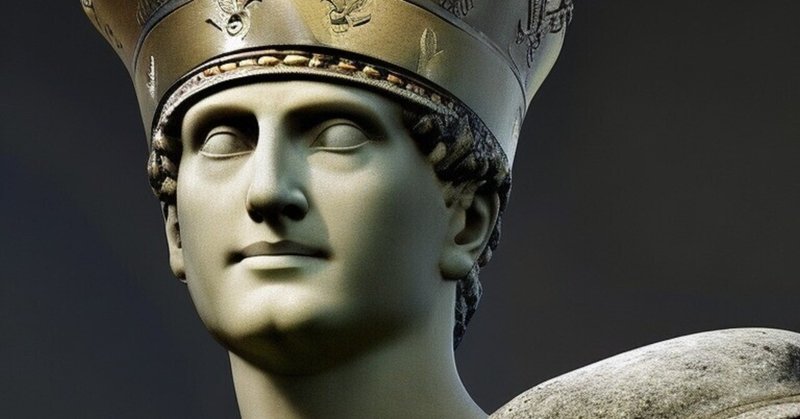
英語長文問題クエスト Part 87 (テーマ:コンスタンティヌス帝)
英語の読解力を伸ばすには多読が必須!特に、TOEFL ibt というテストでは、かなり高度な読解力が必要ですし、何より、このTOEFL ibt という試験が難しいことの理由の1つに、日本語でも勉強していないアカデミックな内容の文章が出題されることです。
このクエストを進めれば、英語の読解力と知識を同時にアップデートさせられるでしょう!
さぁ、今日のクエストを進めてみましょう!
Passages
Title: Emperor Constantine: Shaping the Roman Empire and Christianity
Emperor Constantine, also known as Constantine the Great, was a pivotal figure in the history of the Roman Empire and the development of Christianity. Born in the city of Naissus in 272 CE (modern-day Niš, Serbia), Constantine's reign marked a significant turning point in both the political and religious landscape of the ancient world.
Early Life and Rise to Power
Constantine was the son of Flavius Valerius Constantius, a Roman military officer, and Helena, who is believed to have been of humble origins. In his early years, he rose through the ranks of the Roman military, displaying military prowess and leadership abilities. His father's influence within the Roman government was instrumental in his early political career.
The Edict of Milan
One of the most momentous events during Constantine's reign was the Edict of Milan in 313 CE. This edict, issued jointly with his co-emperor Licinius, proclaimed religious tolerance throughout the Roman Empire. It effectively ended the persecution of Christians, allowing them to practice their faith openly and without fear of persecution. This move had profound implications for the spread of Christianity.
Conversion to Christianity
Constantine's conversion to Christianity is a topic of historical debate. While the exact details remain unclear, it is widely believed that he experienced a religious vision or conversion experience before the Battle of Milvian Bridge in 312 CE. According to tradition, Constantine saw a vision of a cross in the sky with the inscription, "In this sign, you will conquer." Taking this as a divine sign, he adopted the Christian faith and ordered his soldiers to mark their shields with the Christian symbol, the Chi-Rho.
The First Council of Nicaea
Constantine's embrace of Christianity had a profound impact on the early Christian church. In 325 CE, he convened the First Council of Nicaea, bringing together bishops and theologians from across the empire to address theological disputes and establish a unified Christian doctrine. This council played a crucial role in the formation of the Nicene Creed, a statement of Christian faith that remains central to many Christian denominations today.
Legacy
Emperor Constantine's reign and his embrace of Christianity left an indelible mark on history. He played a pivotal role in the Christianization of the Roman Empire, which eventually led to the establishment of Christianity as the state religion. This transformation had profound consequences for the development of Western civilization and the course of world history.
Questions
When and where was Emperor Constantine born?
A. 272 CE in Rome
B. 313 CE in Milan
C. 272 CE in Naissus
D. 312 CE in ByzantiumHow did Constantine rise to power in the Roman Empire?
A. Through a military coup
B. By inheriting the throne from his father
C. Through his military and leadership skills
D. By winning a series of gladiatorial battlesWhat significant event did the Edict of Milan of 313 CE bring about?
A. The official adoption of Christianity as the state religion
B. The end of religious tolerance in the Roman Empire
C. The persecution of Christians
D. Religious tolerance throughout the Roman EmpireWhat is the traditional account of Constantine's conversion to Christianity?
A. He converted after the First Council of Nicaea
B. He experienced a vision before the Battle of Milvian Bridge
C. He was converted by a famous Christian bishop
D. He was born into a Christian familyWhat did Constantine see in his vision before the Battle of Milvian Bridge?
A. A vision of the Roman gods
B. A vision of a cross with a divine inscription
C. A vision of his father, urging him to victory
D. A vision of a serpent, symbolizing his military strategyWhat was the significance of the First Council of Nicaea?
A. It established the Nicene Creed, a statement of Christian faith
B. It proclaimed religious tolerance in the Roman Empire
C. It declared Constantine as the divine ruler of the Roman Empire
D. It led to the persecution of Christians.What was the outcome of the First Council of Nicaea?
A. The establishment of the Nicene Creed
B. The rejection of Christianity as a legitimate faith
C. Constantine's conversion to paganism
D. The division of the Roman Empire into Eastern and Western halvesWhat is the lasting legacy of Emperor Constantine's reign?
A. The fall of the Roman Empire
B. The Christianization of the Roman Empire
C. The spread of paganism in Europe
D. The establishment of Islam as a major religionHow did Constantine contribute to the Christianization of the Roman Empire?
A. By banning Christianity
B. By persecuting Christians
C. By convening the First Council of Nicaea
D. By adopting paganism as the state religionWhat did Constantine's embrace of Christianity mean for the future of Western civilization?
A. It had no significant impact on Western civilization.
B. It led to the decline of Christianity.
C. It played a pivotal role in the development of Western civilization.
D. It resulted in the complete separation of church and state in the West.
Answers and Explanation
ここから先は
¥ 200
この記事が気に入ったらサポートをしてみませんか?
